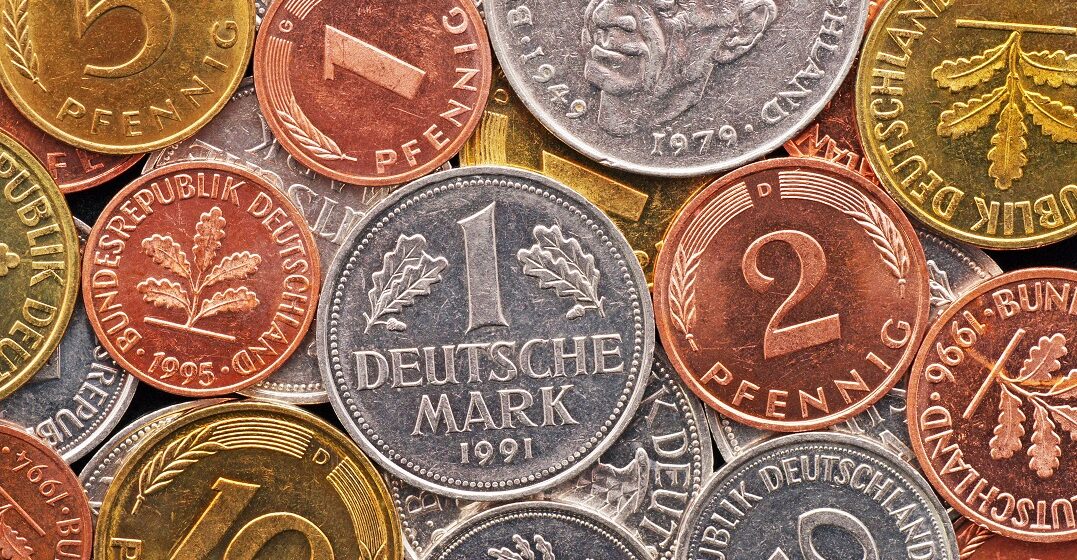by Anne Walther
Published on April 17, 2023
Germany has changed a lot in the last century. Along with the country’s enormous political and economic reforms, there have been some major changes in how people pay for goods and services. Before the euro was introduced in 1999, Germany went through a series of official currencies that weren’t as widely adopted throughout Europe. Since 1873, Germans have paid with the German gold mark (1873), Papiermark (1918), Rentenmark (1923), Reichsmark (1924) and, after World War II, the Deutsche Mark (1948).
Currency in Germany has a long history dating back to the early 17th century when coins were established to facilitate trade across German territories. But why did the German currency change so much? Let’s have a look at the history!
Before the German Empire, different German states used different currencies. The oldest among these currencies was the Hamburg mark, established in 1619. The Hamburg mark was one of the most stable currencies at the time and lasted for more than two centuries, until 1873.
The Hamburg mark was also the first German currency to be divided into smaller “pfennigs,” each of which equals one-hundredth of a mark. It also established the name for all future German currencies until the euro. The word “mark” relates to an old Germanic weight measurement that came into use around the 11th century. It was traditionally used to measure precious metals and coins.
The German confederation used different types of currencies over the centuries, resulting in constant conflicts over exchange rates and trade. This all ended in 1873 with the introduction of the German gold mark. It was the first German currency to be divided into 100 smaller pfennige and was available in metal, silver and gold coins.
After the First World War, Germany became a federal republic for the first time in history and the German banking system issued a new paper currency: the Papiermark. The introduction of a paper currency was in part related to economic problems in Germany after the war. Inflation was ever-increasing, to the point where even a banknote worth 100 trillion would have been essentially worthless. Inflation was ever-increasing and at one point, Germany would have a 100 trillion banknote. To counteract this hyperinflation, Germany issued the Rentenmark in 1923. The currency was backed by land and goods instead of gold, and it was extremely effective at counteracting the crisis. Within a year, the financial crisis had been brought to an end, and the Reichsmark was reinstated.
The Reichsmark stayed in place up until 1948. When Germany lost World War II in 1945, allied forces took about three years to divide the country into different jurisdictions with different financial systems. The Saarland, for example, became a French protectorate and used the Saarmark before it was reunited with the rest of West Germany in 1957. East Germany became part of the Soviet Union and used the East German mark as a currency.
The largest part of Germany became the Republic of West Germany and introduced the German mark (known in Germany as the Deutsche Mark). Both Saarland (in 1957) and East Germany (in 1990) eventually adopted this currency as part of the ongoing unification of Germany. The Deutsche Mark, divided into 100 pfennige, remained the official currency of Germany until the introduction of the euro in 1999.
With the euro now accepted and used across much of Europe, it’s easy to forget that it’s still a very young currency — much like Germany itself, which has only existed in its current form for about 30 years! Many Germans still have a few Deutsche Mark notes at home, so if you want to see the former German currency in real life, make sure to ask your German friends when you get the chance.
